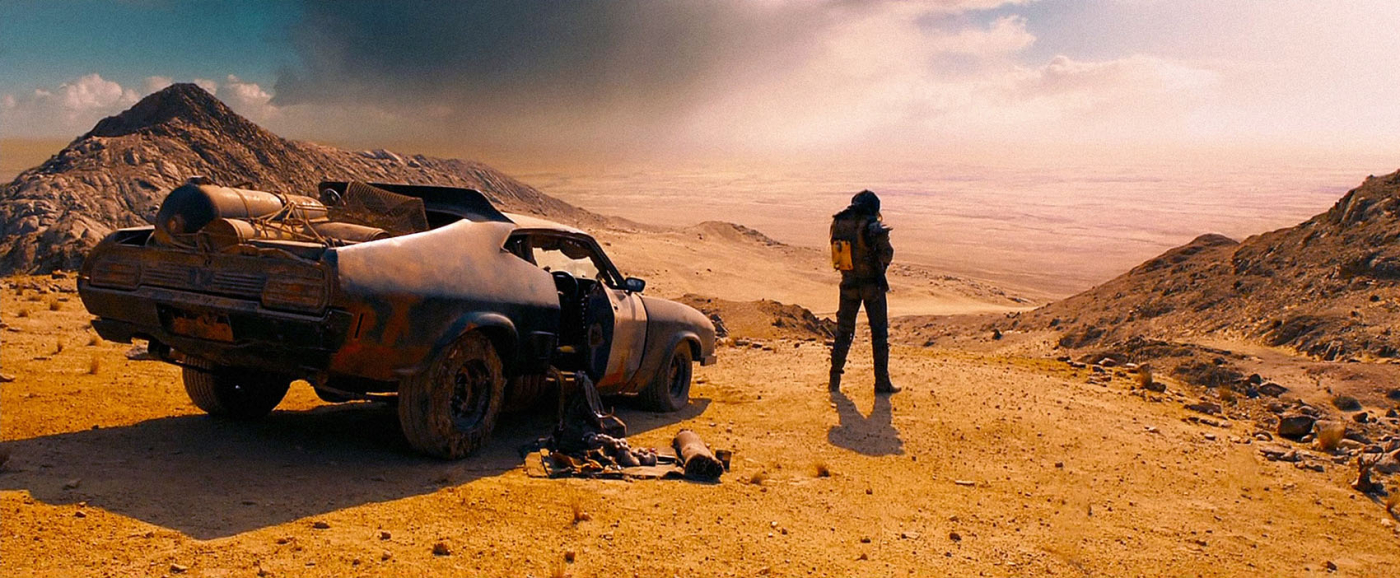
All roads lead to Namibia | The real star of Mad Max: Fury Road
Karen Krizanovich heads to Hollywood for the premiere of Mad Max: Fury Road, and discovers that the real star may not get top billing, but sure makes the movie

Karen Krizanovich heads to Hollywood for the premiere of Mad Max: Fury Road, and discovers that the real star may not get top billing, but sure makes the movie

Aptly premiering at Hollywood’s TCL Chinese Theatre during one of the worst droughts in California history, Mad Max: Fury Road is Australian mastermind George Miller’s long-awaited epic, picking up where Mad Max 2: The Road Warrior left off three decades ago. Headlined by Tom Hardy and the Oscar-winner Charlize Theron, Nicholas Hoult, Rosie Huntington-Whitely and Zoe Kravitz, it’s a two-hour epic with physical stunts, superb visual effects and over 120 unique vehicles which were wrecked every day and fixed every night – for real.
Tiny wildflowers sprang up, perfect for a revamp of The Sound of Music
But one star makes this Mad Max almost too large for the big screen: Namibia. The opening shot, in which Max surveys a foreboding valley of arid sand, was filmed at Spitzkoppe Mountain – yet taking the production there was merely one of the final steps on the 15-year trek to Fury Road. The film’s original location was the desert around the mining town of Broken Hill, New South Wales, but its long expanse of desert flats went bloomy and verdant two years in a row due to uncharacteristic flooding. Tiny wildflowers sprang up, perfect for a revamp of The Sound of Music. For a story that pivots on the despot Immortan Joe (Hugh Keays-Byrne, who was Toecutter in the first two movies) withholding water from his tribe of followers, the driest possible desert conditions were necessary.

Mad Max: Fury Road, on location in Namibia
Arguably, the rain on the plain has made Fury Road a better thang. Miller moved the film to the oldest and most spectacular desert in the world, shipping hundreds of unique vehicles and their support teams to the far flung port of Walvis Bay, Namibia. Almost devoid of vegetation, the Namib Desert, Dorob National Park, is part of the Kalahari System. Until now best known to eco-tourists and Chinese mining concerns, this ancient terrain, unchanged in 40 million years, provides an unforgettable, scratch that, huge backdrop for Immortan Joe’s armies: hundreds of white-painted “war-boys”, spray-painted silver for battle, dangling chains and revving engines. The sweeping grandeur of remote places like Blanky’s Flats and Paaltjies (an Afrikaans name pronounced “paal-keys”), as well as the edges of the Namib-Naukluft, Namibia’s largest national park, make Fury Road a punk Lawrence of Arabia. Amid the canyons, gravel flats, stone mesas and statuesque sand dunes south of Swakopmund, the futuristic world of Mad Max was brought to life, captured on many Arri Alexa digital cameras sending over 480 hours of footage to the cutting rooms. That’s the thing with digital: you don’t ever have to stop.

Mad Max: Fury Road, on location in Namibia
Swakopmund, famous for its German clapboard gingerbread houses and gentle odour of grey recycled water, doesn’t hide its past (there used to be a bit of Nazi memorabilia in its antique gift shop, only for perverse tourists), but a sense of innocence prevails. Dusty and sweet, it has the quaint feeling of a colonial town. There’s mighty good coffee and made-right-there baked goods served at Bojos Café – or book a table as soon as you can for fresh seafood at The Tug on the beach near the lighthouse and remember… the ocean, where Mad Max: Fury Road never goes, holds the rotting wrecks of the Skeleton Coast, a treacherous, ever-changing segment of the Atlantic that still claims victims. A Spanish galleon was found buried in sand far inland. The catchphrase of Mad Max: Fury Road is an ironic, “Oh what a lovely day!”. Despite its far removed beauty, this blockbuster will put the mystery of Namibia right in your face. And you’ll like it. C